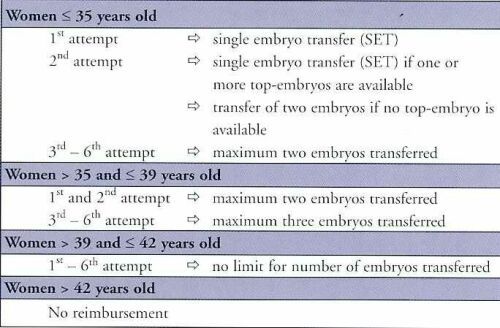Reimbursement of IVF in Belgium if only one embryo is transferred
OBGYN.net Conference Coveragefrom the 19th Annual Meeting of ESHRE - Madrid, Spain
View the video (requires free Windows Media Player)
Hans van der Slikke, MD, PhD: It is the first of July, 2003, we are in Madrid at the ESHRE Conference and next to me is Dr Willem Ombelet, from Belgium. I have to congratulate you because you have done revolutionary financial negotiations with your government concerning IVF. Could you tell us what you did?
Willem Ombelet, MD, PhD: What we did is the following: We had some very optimistic reports about the success rate of single embryo transfers and the College of Reproductive Medicine decided to calculate what would be the saving of neo-natal costs, if we could reduce multiple pregnancy rates by approximately 50%. Then we found out that the money we could save with the reduction of multiple pregnancies, reduction of twin pregnancies by 50% and triplet pregnancies to almost zero, would be enough to reimburse the laboratory cost of all patients for at least six cycles. We have discussed this with the government and they thought it was a good idea, of course: it’s a win-win situation for both, they don’t need extra money and the patients are happy, of course.
Hans van der Slikke, MD, PhD: But the condition is that you do a single embryo transfer?
Willem Ombelet, MD, PhD: Yes, there are some conditions. We calculated that depending on the age and cycle number, you can put back one, two and, if you are more than 35 years old, in some cases, three embryos; but you start with single embryo transfers in all cases of patients with an age of less than 35 years.
Hans van der Slikke, MD, PhD: This is including the frozen embryos?
Willem Ombelet, MD, PhD: With frozen embryos, you can transfer two embryos, it’s not that limited.
Hans van der Slikke, MD, PhD: This is revolutionary, and yet you did not even calculate the costs of severe handicaps?
Willem Ombelet, MD, PhD: If we calculate the cost of severe handicaps, taking into account what the risk is for severe handicaps, and I’m talking about deafness, blindness and mental retardation, due to extreme prematurity because of multiple pregnancy then it’s even much more than we can save with the neo-natal costs. This is an argument to the government to reimburse non-IVF cycles as well, because what we fear is that if IVF is reimbursed, that most patients will go immediately to IVF before starting the non-IVF procedures. If we have something in our hands to take to the government, we have good registration, we have good figures, we have good data, we can go to them and tell them that there will be enough money also to reimburse first-line treatment according to the guidelines of evidence based medicine.
Hans van der Slikke, MD, PhD: When do you expect to hear about the deal?
Willem Ombelet, MD, PhD: I hope we can do it within six months, that’s what they promised me. They are already aware of that and they are optimistic. I think we can arrange it and the project will be finished only if we can reimburse non-IVF as well.
Hans van der Slikke, MD, PhD: You’re the first country where this kind of logic is used?
Willem Ombelet, MD, PhD: I think so, but I think there are many other countries where you can do it the same way, but you have to be quick because if the multiple pregnancy rate goes down because of the success of single embryo transfer, after a while, after a few years, you don’t have enough arguments for the government to tell them that you save money. I think, there are many countries which will need the project.
Hans van der Slikke, MD, PhD: The moment is now?
Willem Ombelet, MD, PhD: The moment is now!
Hans van der Slikke, MD, PhD: Is it only private now or is it already definitely started?
Willem Ombelet, MD, PhD: It’s definite. We start from today! We will do a re-evaluation in one or two years because you never know what goes wrong, if the centres follow the protocol strictly because in the second cycle, with patients younger than 35, you may put back two embryos if the embryo quality is not good. But you cannot be there in the centre to find out if it’s a top embryo or not, to see if they try to put two embryos in the second cycle for all patients, but then we find out because there will also be no reduction of multiple pregnancies by 50%. There will be a control mechanism.
Hans van der Slikke, MD, PhD: Okay, so there will be, and I’m sure you will report about that soon. Thank you very much.
Willem Ombelet, MD, PhD: Thank you.

S1E4: Dr. Kristina Adams-Waldorf: Pandemics, pathogens and perseverance
July 16th 2020This episode of Pap Talk by Contemporary OB/GYN features an interview with Dr. Kristina Adams-Waldorf, Professor in the Department of Obstetrics and Gynecology and Adjunct Professor in Global Health at the University of Washington (UW) School of Medicine in Seattle.
Listen
